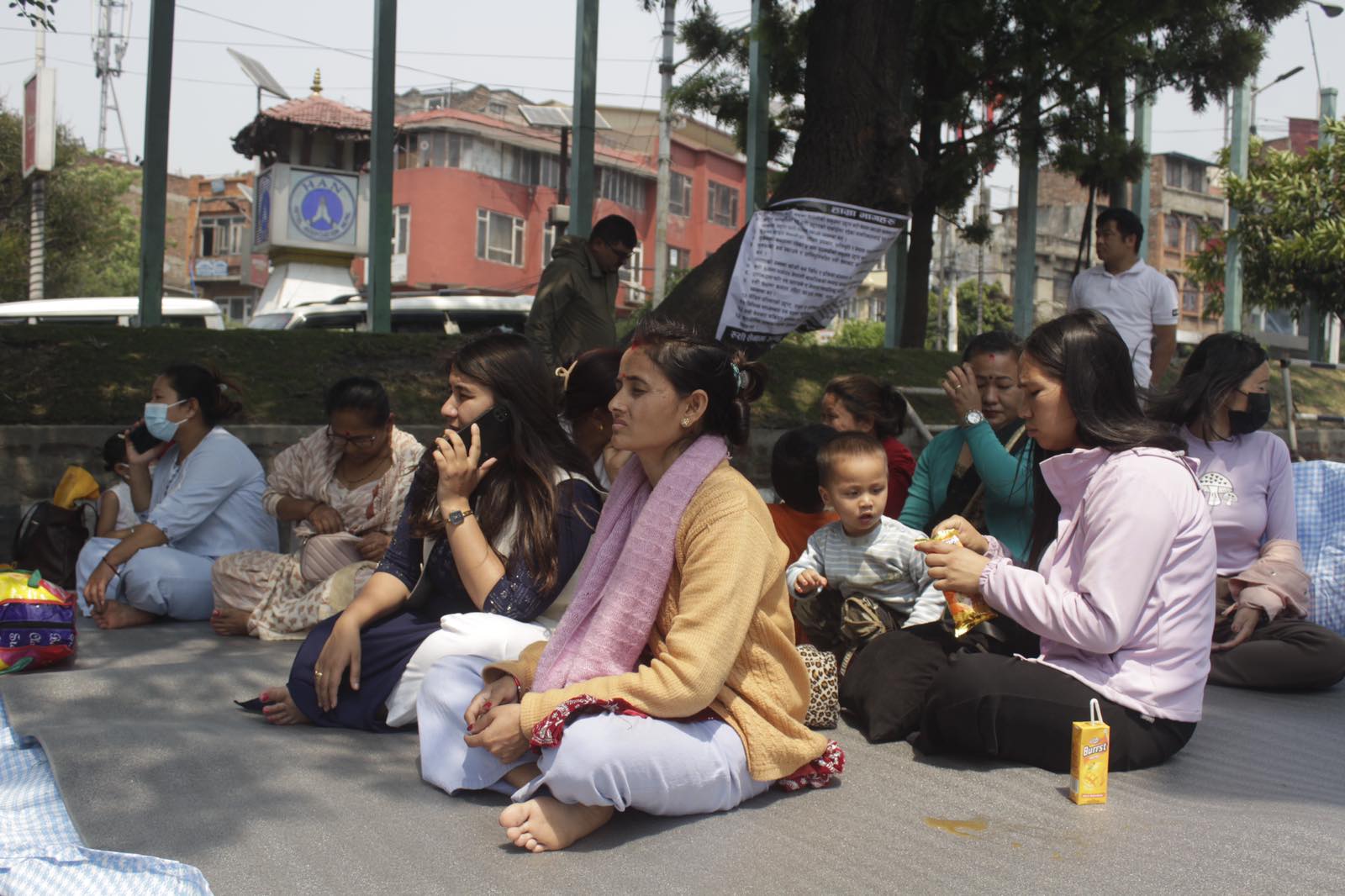
OR
Washed away
Published On: August 14, 2017 01:00 AM NPT
It is hard to prepare for the kind of unpredictable weather patterns that the country has witnessed of late. Yet that cannot be an excuse for near complete lack of preparation that Nepalis have become so depressingly used to seeing every monsoon. All three of our security organs reportedly spend a lot of money in improving their disaster-preparedness. The government also repeatedly informs the people that as more and more early warning systems are being installed, the destruction of life and property will be minimal. Yet that plainly is not the case. As of this writing, 49 people have already died due to floods and landslides triggered by incessant rainfall in the past few days; 36 are reported as missing. Government sources tell Republica that the number of deaths could cross 100 when a final tally is made. But it could get even worse. Although rainfalls in eastern Nepal are expected to abate in the next few days, according to the Meteorological and Forecasting Division, there will continue to be heavy rainfall in central and western Tarai. Now since nearly the entire Tarai belt is under water, there will have to be an unprecedented relief, rescue and resettlement effort.
The ball is already rolling. The Ministry of Health has already dispatched ‘rapid action teams’ comprised of medical personnel to the 15 most-affected districts with the goal of preventing the spread of water-borne diseases. For his part the Minister for Urban Development Prabhu Sah has instructed those in his ministry to quickly arrange for temporary shelters for flood-hit families. Nepal Army personnel are on ground zero, trying to rescue stranded people on their choppers and inflatable boats. Nepal Police and Armed Police Force are also involved. People from all walks of life are busy collecting funds or relief material for the flood-hit. The whole country seems to have come together to help their suffering countrymen, again showing that even though our official channels are mostly weak and ineffectual, the sense of civic service among the people remains strong. Alas, in the long run, that is not enough. What we really need are robust and reliable flood control and prevention measures. But it is not possible without strong commitment of our major political actors to resolving what is a life-and-death issue for millions of Nepalis every year.
There are more immediate concerns as well. For instance some inundated villages in Rautahat and Saptari remain out of contact after their telephone lines were snapped by the floods. Since it will be impossible to mount a credible relief operation without first taking a measure of the damages, it will be vital to quickly reestablish contact with the affected areas. The three security agencies, with their extensive networks and logistics, are best equipped for this kind of work. It is thus important that all their energies be directed at dealing with this national emergency. Once such contact with stranded flood victims is established, the next course of action is relocating them to safer areas and providing them food and temporary shelter. But the government, with its limited resources, will need all the help it can get. This is why we would like to urge all our valued readers to contribute, in whatever way they can, in the ongoing rescue, relief and rehabilitation efforts.
You May Like This

Mini-hydro project canal washed away
GULMI, August 13: Incessant rain for the last three days has washed away the biggest hydro power project in the district,... Read More...

Six die as ambulance carrying woman in labor washed away
RAUTAHAT, August 13 : In a tragic incident, six persons died after an ambulance ferrying a pregnant woman in labor pain... Read More...

Lest they should look away
Today’s young people anywhere in the world is the most powerful generation in history ... Read More...

Just In
- Govt padlocks Nepal Scouts’ property illegally occupied by NC lawmaker Deepak Khadka
- FWEAN meets with President Paudel to solicit support for women entrepreneurship
- Koshi provincial assembly passes resolution motion calling for special session by majority votes
- Court extends detention of Dipesh Pun after his failure to submit bail amount
- G Motors unveils Skywell Premium Luxury EV SUV with 620 km range
- Speaker Ghimire administers oath of office and Secrecy to JSP lawmaker Khan
- In Pictures: Families of Nepalis in Russian Army begin hunger strike
- New book by Ambassador K V Rajan and Atul K Thakur explores complexities of India-Nepal relations














_20240419161455.jpg)


Leave A Comment